Introduction
The Motivation Layer in ArchiMate is a critical component for understanding the underlying reasons and drivers that shape enterprise architecture. This layer provides a framework for modeling the motivations behind architectural decisions, ensuring that all aspects of the architecture align with the organization’s goals and stakeholder interests. This comprehensive guide explores the key elements of the Motivation Layer, their relationships, and the importance of this layer in enterprise architecture, with numerous examples to illustrate practical applications.
Key Elements of the Motivation Layer
| Element | Definition | Notation |
|---|---|---|
| Stakeholder | Represents the role of an individual, team, or organization (or classes thereof) that represents their interests in the effects of the architecture. | 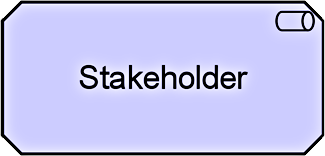  |
| Driver | Represents an external or internal condition that motivates an organization to define its goals and implement the changes necessary to achieve them. | 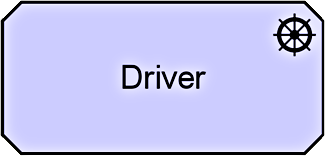  |
| Assessment | Represents the result of an analysis of the state of affairs of the enterprise with respect to some driver. | 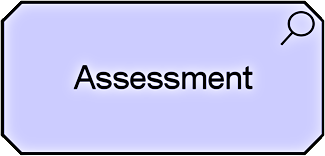  |
| Goal | Represents a high-level statement of intent, direction, or desired end state for an organization and its stakeholders. | 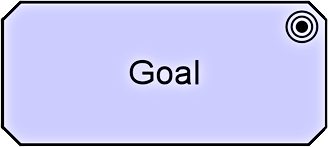  |
| Outcome | Represents an end result. | 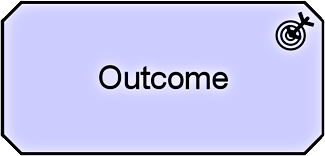  |
| Principle | Represents a statement of intent defining a general property that applies to any system in a certain context in the architecture. | 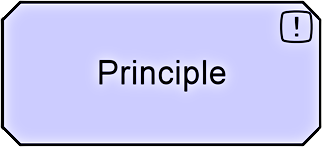  |
| Requirement | Represents a statement of need defining a property that applies to a specific system as described by the architecture. |  |
| Constraint | Represents a factor that limits the realization of goals. |  |
| Meaning | Represents the knowledge or expertise present in, or the interpretation given to, a concept in a particular context. |  |
| Value | Represents the relative worth, utility, or importance of a concept. | 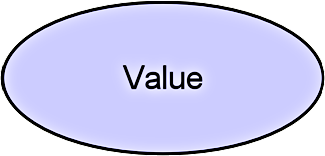 |
1. Stakeholder
Definition: Represents individuals or groups who have an interest in the outcome of the architecture. Stakeholders can include customers, employees, management, and external entities.
Examples:
- Customers: In a retail company, customers are stakeholders who are interested in the ease of use and reliability of the e-commerce platform.
- Employees: In a manufacturing company, employees are stakeholders who are interested in efficient workflows and safe working conditions.
- Management: In a financial institution, management is a stakeholder interested in regulatory compliance and operational efficiency.
- External Entities: In a healthcare organization, regulatory bodies are stakeholders interested in ensuring that the organization complies with healthcare standards and regulations.
2. Driver
Definition: An internal or external condition that motivates an organization to define its goals and implement necessary changes. Drivers can be factors like market trends, regulatory requirements, or internal performance metrics.
Examples:
- Market Trends: In a tech company, the driver could be the increasing demand for cloud-based solutions, motivating the company to invest in cloud infrastructure.
- Regulatory Requirements: In a financial institution, the driver could be new data privacy regulations, motivating the company to implement stricter data security measures.
- Internal Performance Metrics: In a manufacturing company, the driver could be the need to improve production efficiency, motivating the company to invest in automation technologies.
3. Assessment
Definition: The result of analyzing the state of affairs concerning a driver. Assessments help organizations understand how well they are responding to their drivers, often using tools like SWOT analysis.
Examples:
- SWOT Analysis: In a retail company, an assessment could involve a SWOT analysis to evaluate the strengths, weaknesses, opportunities, and threats related to the driver of increasing online sales.
- Performance Metrics: In a manufacturing company, an assessment could involve analyzing production efficiency metrics to evaluate how well the company is responding to the driver of improving production efficiency.
4. Goal
Definition: A high-level statement of intent that outlines the desired end state for an organization. Goals provide direction and purpose for architectural efforts.
Examples:
- Customer Satisfaction: In a retail company, a goal could be to improve customer satisfaction by enhancing the user experience of the e-commerce platform.
- Operational Efficiency: In a manufacturing company, a goal could be to increase operational efficiency by implementing automation technologies.
- Regulatory Compliance: In a financial institution, a goal could be to achieve full compliance with new data privacy regulations.
5. Outcome
Definition: The end result achieved from implementing goals and requirements. Outcomes help measure the success of architectural initiatives.
Examples:
- Increased Sales: In a retail company, an outcome could be a 20% increase in online sales as a result of improving the user experience of the e-commerce platform.
- Improved Efficiency: In a manufacturing company, an outcome could be a 15% increase in production efficiency as a result of implementing automation technologies.
- Full Compliance: In a financial institution, an outcome could be achieving full compliance with new data privacy regulations as a result of implementing stricter data security measures.
6. Principle
Definition: A qualitative statement of intent that guides decision-making within the architecture. Principles ensure that architectural designs adhere to established standards and values.
Examples:
- Customer-Centric Design: In a retail company, a principle could be to prioritize customer-centric design in all architectural decisions.
- Sustainability: In a manufacturing company, a principle could be to prioritize sustainability in all operational decisions.
- Data Security: In a financial institution, a principle could be to prioritize data security in all IT decisions.
7. Requirement
Definition: A statement of need that must be fulfilled by the architecture to achieve desired outcomes and goals. Requirements serve as a basis for evaluating architectural solutions.
Examples:
- User-Friendly Interface: In a retail company, a requirement could be to develop a user-friendly interface for the e-commerce platform to improve customer satisfaction.
- Automation: In a manufacturing company, a requirement could be to implement automation technologies to increase production efficiency.
- Data Encryption: In a financial institution, a requirement could be to implement data encryption to achieve full compliance with new data privacy regulations.
8. Constraint
Definition: Factors that limit or obstruct the realization of goals or requirements. Constraints must be managed to ensure successful implementation.
Examples:
- Budget Limitations: In a retail company, a constraint could be budget limitations that restrict the scope of improvements to the e-commerce platform.
- Technological Limitations: In a manufacturing company, a constraint could be technological limitations that restrict the implementation of automation technologies.
- Regulatory Limitations: In a financial institution, a constraint could be regulatory limitations that restrict the implementation of data security measures.
Relationships Among Motivation Elements
The motivation elements are interconnected through various relationships, such as influence and realization relationships. These relationships provide traceability and clarity on how motivations impact architectural decisions, enabling architects to align their designs with stakeholder needs effectively.
Examples:
- Driver to Goal: A driver (e.g., increasing demand for cloud-based solutions) may influence a goal (e.g., to invest in cloud infrastructure).
- Goal to Requirement: A goal (e.g., to improve customer satisfaction) may be realized through a requirement (e.g., to develop a user-friendly interface for the e-commerce platform).
- Requirement to Principle: A requirement (e.g., to implement automation technologies) may realize a principle (e.g., to prioritize sustainability in all operational decisions).
- Principle to Outcome: A principle (e.g., to prioritize data security) may lead to an outcome (e.g., achieving full compliance with new data privacy regulations).
Importance of the Motivation Layer
1. Alignment with Business Objectives
The Motivation Layer ensures that all architectural efforts are aligned with organizational goals and stakeholder interests, fostering strategic coherence.
Examples:
- Strategic Alignment: In a multinational corporation, the Motivation Layer can be used to ensure that all architectural decisions align with the organization’s strategic goals, such as market expansion and cost reduction.
- Regulatory Compliance: In a financial institution, the Motivation Layer can be used to ensure that all architectural decisions align with regulatory requirements, such as data privacy and financial reporting.
2. Enhanced Communication
By clearly defining motivations and their relationships, architects can communicate effectively with stakeholders about the rationale behind architectural choices.
Examples:
- Stakeholder Engagement: In a healthcare organization, the Motivation Layer can be used to communicate the rationale behind architectural decisions to stakeholders, such as doctors, nurses, and patients, ensuring that their concerns are addressed.
- Executive Presentations: In a board meeting, the Motivation Layer can be used to present the strategic goals and principles driving architectural decisions, helping executives understand the rationale behind architectural choices and align them with organizational objectives.
3. Impact Assessment
Understanding motivations allows organizations to assess the potential impacts of changes in drivers or goals on their architecture, aiding in change management and strategic planning.
Examples:
- Change Management: In a manufacturing company, the Motivation Layer can be used to assess the potential impacts of changes in market trends or regulatory requirements on the architecture, helping in developing strategies to manage these changes.
- Strategic Planning: In a tech company, the Motivation Layer can be used to assess the potential impacts of changes in internal performance metrics or customer demands on the architecture, helping in developing strategies to address these changes.
Conclusion
The Motivation Layer in ArchiMate plays a vital role in modeling the reasons behind enterprise architecture decisions, facilitating alignment with business objectives and enhancing communication among stakeholders. By clearly defining motivations and their relationships, architects can ensure that their designs align with stakeholder needs and organizational goals. This comprehensive approach ensures that both technical and non-technical stakeholders can understand and contribute to the architectural design process, leading to better alignment with organizational goals and improved outcomes. By following the steps outlined in this guide and utilizing the numerous examples provided, organizations can effectively integrate the Motivation Layer into their enterprise architecture practices to achieve their strategic objectives.
ArchiMate References
Here is a reference list on ArchiMate by adopting Visual Paradigm for EA teams:
-
Best ArchiMate Software: This article discusses how Visual Paradigm’s ArchiMate tools facilitate communication of architectural designs among stakeholders and EA team members. It highlights the ability to model business processes with BPMN, design IT solutions with UML, and create various diagrams linked to ArchiMate for better traceability. The tool is certified by The Open Group and supports the full vocabulary and syntax of ArchiMate 3.1, making enterprise architecture design more straightforward1.
-
What is ArchiMate?: This guide provides an overview of ArchiMate, explaining its framework that divides enterprise architecture into business, application, and technology layers. It discusses the active support from the ArchiMate Forum of The Open Group and how ArchiMate’s well-founded concepts provide precision in modeling. The article also mentions the integration of ArchiMate with existing methods like TOGAF and its support by numerous consultancies and software tools2.
-
Visual Paradigm TOGAF ADM Tool: This article emphasizes how Visual Paradigm’s TOGAF ADM Tool empowers EA teams with innovative features, streamlined processes, and enhanced collaboration. It discusses the importance of consistency across EA projects and the ease of reusing existing elements in new designs. The article also highlights the customizable viewpoints and configurable architecture repositories that make Visual Paradigm a valuable tool for EA teams3.
-
Composition Relationship in ArchiMate EA Modeling: This article explains the composition relationships in ArchiMate and how Visual Paradigm supports EA projects with a comprehensive set of modeling tools. It discusses the features for requirement management, project management, and documentation, as well as the collaboration and teamwork facilitated by Visual Paradigm’s cloud-based services. The article also mentions the version control and change tracking features that enhance collaboration in EA teams5.
-
Step-by-Step Enterprise Architecture Tutorial with TOGAF: This tutorial provides a step-by-step guide to applying TOGAF in enterprise architecture development using Visual Paradigm. It explains how to create ArchiMate diagrams and produce TOGAF deliverables with ease. The tutorial also discusses the tools and diagrams provided by Visual Paradigm for analysis and documentation, including ArchiMate 3 diagrams and various viewpoints6.
-
Mastering ArchiMate: A Comprehensive Guide to Enterprise Architecture Modeling: This guide offers an in-depth look at ArchiMate and its use in enterprise architecture modeling. It discusses the flexibility of ArchiMate in creating various viewpoints relevant to different stakeholders and the importance of using a standardized language and notation for clear communication. The guide also highlights the use of colors in ArchiMate models to enhance understanding and interpretation7.
-
Guide-Through Process for EA and ITSM: This article discusses how Visual Paradigm’s Guide-Through Process helps in enterprise architecture and project management initiatives. It explains the steps involved in performing activities required in EA development and IT project management, including visual modeling with ArchiMate diagrams. The article also mentions the integration of EA processes with Agile software development using Visual Paradigm’s built-in task manager8.
-
Understanding the Purpose of ArchiMate: A Guide for Enterprise Architects: This guide provides an overview of ArchiMate and its purpose in enterprise architecture. It discusses the features of Visual Paradigm’s ArchiMate Diagram Editor, including its intuitive interface and collaboration tools. The guide also explains how ArchiMate viewpoints provide predefined perspectives for creating architectural models and simplifying complex information for different stakeholders9.
-
ArchiMate Viewpoint Archives: This article discusses the use of ArchiMate viewpoints in providing predefined perspectives for creating architectural models. It explains how viewpoints help focus on specific aspects or concerns of the architecture, making it easier to communicate complex information to different stakeholders. The article also mentions the use of ArchiMate in aligning IT strategies with business goals and ensuring compliance with standards like ISO 2700110.
These references provide a comprehensive overview of how Visual Paradigm’s ArchiMate tools and features support EA teams in modeling, collaborating, and communicating complex enterprise architectures.